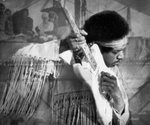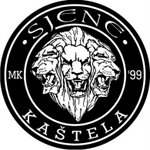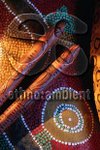
Live at Leeds (1970) is The Who's first live album, and indeed is their only live album that was released while the band was still recording and performing regularly. In 2003, the album was ranked number 170 on Rolling Stone magazine's list of the 500 greatest albums of all time.
After releasing Tommy in mid-1969 The Who went on an extended world tour to promote it, and returned to England at year's end with a desire to release a live album from the tour. However, they balked at the prospect of listening to the hundreds of hours of accumulated recordings to decide which would make the best album, so they ritually burned the tapes (to prevent bootlegging) and scheduled two shows, one at Leeds University and the other in Hull, for the express purpose of recording and releasing a live album. The shows were performed on February 14th (Leeds) and 15th (Hull) 1970, but technical problems with the recordings from the 15th - the bass guitar had not been recorded - made it necessary for the show from the 14th to be released as the album.
Perhaps because of these circumstances, or perhaps because The Who were hyped up due to their international success with Tommy, or perhaps simply because The Who were in their prime at the time of recording, Live At Leeds turned out to be a wildly popular recording. It also became a critical smash, with the New York Times acclaiming it as "the best live rock album ever made." Its reputation as such continues to this day with Q magazine recently putting it at the top of its list of the greatest live albums of all time. The album's reputation has become so lofty that the venue it was recorded at has been named a national landmark in the UK, commemorated with a blue plaque.
The album cover looks like the simple cover of a bootleg LP of the era: it is of plain brown cardboard with "The Who Live At Leeds" printed on it in plain blue or red block letters as if stamped on with ink. The original LP's cover opened out, butterfly-style, and had a pocket on either side of the interior, with the record in a paper sleeve on one side and facsimiles of various memorabilia on the other, including a photo of the band from the My Generation photoshoot, handwritten lyrics to the "Listening to You" chorus from Tommy, a receipt for smoke bombs, and the early black "Maximum R&B" poster showing Pete Townshend windmilling his Rickenbacker in mid-leap. The label was handwritten (apparently in Townshend's hand), and included instructions to the engineers not to attempt to remove any crackling noise (the recording is in fact very clean, except of course for the deliberate electronic distortion of the amplified instruments).
Remastered 1995 CDThe digitally remastered CD, released in 1995, had the original tracks, which were expanded, and many new ones.
After releasing Tommy in mid-1969 The Who went on an extended world tour to promote it, and returned to England at year's end with a desire to release a live album from the tour. However, they balked at the prospect of listening to the hundreds of hours of accumulated recordings to decide which would make the best album, so they ritually burned the tapes (to prevent bootlegging) and scheduled two shows, one at Leeds University and the other in Hull, for the express purpose of recording and releasing a live album. The shows were performed on February 14th (Leeds) and 15th (Hull) 1970, but technical problems with the recordings from the 15th - the bass guitar had not been recorded - made it necessary for the show from the 14th to be released as the album.
Perhaps because of these circumstances, or perhaps because The Who were hyped up due to their international success with Tommy, or perhaps simply because The Who were in their prime at the time of recording, Live At Leeds turned out to be a wildly popular recording. It also became a critical smash, with the New York Times acclaiming it as "the best live rock album ever made." Its reputation as such continues to this day with Q magazine recently putting it at the top of its list of the greatest live albums of all time. The album's reputation has become so lofty that the venue it was recorded at has been named a national landmark in the UK, commemorated with a blue plaque.
The album cover looks like the simple cover of a bootleg LP of the era: it is of plain brown cardboard with "The Who Live At Leeds" printed on it in plain blue or red block letters as if stamped on with ink. The original LP's cover opened out, butterfly-style, and had a pocket on either side of the interior, with the record in a paper sleeve on one side and facsimiles of various memorabilia on the other, including a photo of the band from the My Generation photoshoot, handwritten lyrics to the "Listening to You" chorus from Tommy, a receipt for smoke bombs, and the early black "Maximum R&B" poster showing Pete Townshend windmilling his Rickenbacker in mid-leap. The label was handwritten (apparently in Townshend's hand), and included instructions to the engineers not to attempt to remove any crackling noise (the recording is in fact very clean, except of course for the deliberate electronic distortion of the amplified instruments).
Remastered 1995 CDThe digitally remastered CD, released in 1995, had the original tracks, which were expanded, and many new ones.
.
.
.
Tracks
"Heaven And Hell" (John Entwistle) – 4:50
"Heaven And Hell" (John Entwistle) – 4:50
"I Can't Explain" (Townshend) – 2:58
"Fortune Teller" (Naomi Neville aka Allen Toussaint; original by Benny Spellman) – 2:34 "Tattoo" (Townshend) – 3:42
"Young Man Blues" (Mose Allison) – 5:51
"Substitute" (Townshend) – 2:06
"Happy Jack" (Townshend) – 2:13
"I'm a Boy" (Townshend) – 4:41
"A Quick One, While He's Away" (Townshend) – 8:41
"Amazing Journey/Sparks" (Townshend) – 7:54
"Summertime Blues" (Jerry Capeheart/Eddie Cochran) – 3:22
"Shakin' All Over" (Frederick Heath) – 4:34
"My Generation" (Townshend) – 15:46
"Magic Bus" (Townshend) – 7:46
LINK: (copy link to browser and change *!!* to *tt*)
h!!p://www.megaupload.com/?d=EMP6X353
Please leave a comment









3 comments:
I certaintly agree. One of the best live albums of all time.
The combination of Moons frantic drumming and Entwhistles revolutionary bass playing make this one of the best rythym sections in rock and they are even better live.
Highly recommended.
Thanks,
Gordon.
Have heard a lot about this album and how it was the only one to capture The Who's energy on stage- looking forward to listening to it for the first time- thanks a lot!
This is the best Who live ever and one of the best liverecords of all times!!! Another one that can match this one is "Live at the Isle of Wight Festival 1970"
rockanthology
Post a Comment